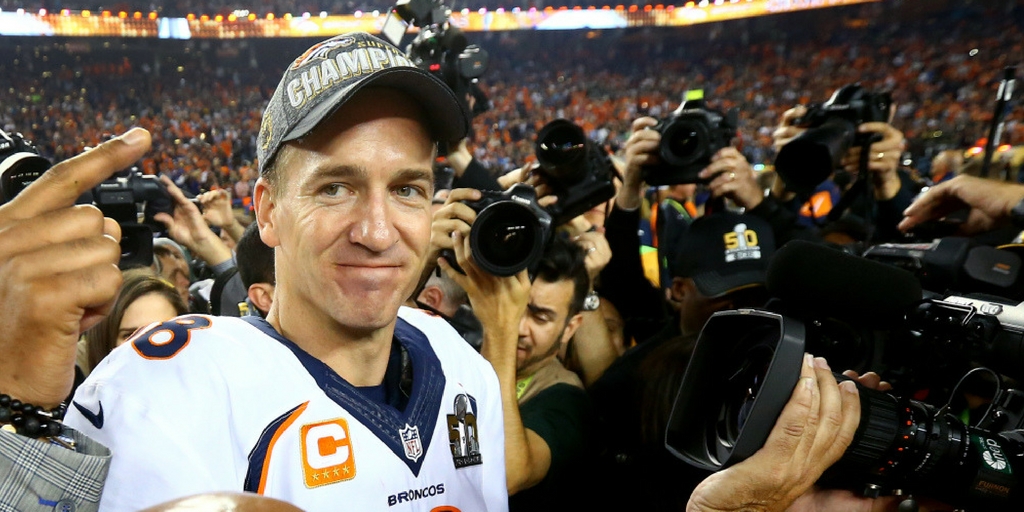
by Fronetics | Oct 18, 2017 | Blog, Content Marketing, Leadership, Marketing, Social Media
Supply chain and logistics executives should be using their celebrity on social media to be the public face of their businesses and an extension of their brands.
Here at Fronetics, we talk a lot about the importance of a social media presence for supply chain and logistics businesses. Most companies use social media to build brand awareness, communicate with a target audience, and, of course, attract new leads and customers. It’s highly effective.
But I am a strong believer that executives should also be on social media, as themselves, representing their brands and establishing themselves as thought leaders in the industry.
With their relative celebrity, supply chain and logistics executives are uniquely positioned to attract a following of customers, prospects, potential talent, industry peers, and admirers. They can use social media to connect with these people, share their ideas and industry news, and become the human face of their brands. It amplifies the company’s social media efforts in a way brands can’t do themselves. After all, social media is about connecting with people.
It makes sense, right? But in reality, 61 percent of fortune 500 CEOs have no social presence whatsoever. It’s an enormous missed opportunity.
Think of what these 3 CEOs’ social media presence has done for their brands.
With almost 12 million Twitter followers, the founder and owner of Virgin Group was named the top CEO on social media. Branson insists on creating his authentic content — from funny, personal stories to pictures — himself, and his commitment to posting daily keeps followers engaged. The resulting dialogue and relationship with followers has helped elevate his personal brand and Virgin as well.
Co-founder, president and former chief editor of the Huffington Post, Huffington was an early adopter of social media as a marketing tool. She has used her success at Huff Post and her personal social media presence to increase visibility to her newer projects, including Thrive Global.
Musk has committed to being authentic and open about the ups and downs of his business ventures, and his followers have responded favorably with an almost cult-like following. His personal account’s audience is more than double the number of followers combined for his three companies. Taking a page from Apple’s play book, Musk has used the reveal of new Tesla models and Space X rockets to stir up a buzz about projects. These live stream reveals are flashy, yet cool and casual, and have garnered over a million views.
Supply chain and logistics executives killing social media
This is not to say that there are not some supply chain and logistics executives who are capitalizing on using their personal brands on social media. Here are some as an example:
- Kelli Saunders, Morai Logistics
- Peter Tirschwell, IHS Markit
- Hailey McKeefrey, EBN
Which executives do you follow on social media?
Related posts:

by Fronetics | Oct 9, 2017 | Blog, Content Marketing, Marketing, Social Media, Talent
As peer influence becomes increasingly important in B2B buying decisions, empowering employee brand ambassadors will benefit your bottom line.
I recently attended a dinner party where I met a new acquaintance. We talked about our families, our hobbies and, of course, our jobs. She recently started working for a small business about which she was tangibly passionate. After listening to her talk, I went home, immediately started following the company on social media, and purchased some products.
Some companies are overlooking their greatest marketing tool: their employees. That woman made a big impression on me and actually influenced a sale. The experience reflects a trend that’s also growing in the B2B space: the impact of peer influence on buying decisions. In fact, 68% of B2B buyers say they give credence to peer reviews in the purchase process.
Imagine the number of people you could reach through each employee’s peer network. It’s a massive opportunity.
I’ve written lately about the rise of influencer marketing. It’s a strategy B2B businesses are starting to understand and use to their advantage. But you don’t need a Kardashian or even an important industry professional to get started. Employees are your most natural, ready-made influencers.
Here are 3 reasons to invest in making your employees brand ambassadors.
3 benefits of employee brand ambassadors
1. Increased social media reach
According to a study conducted by the MSL Group, employee advocates are connected to 10X as many people as their brand on social media, and can increase the reach of brand content by 561%. If your employees are posting about your company on social media, they’re reaching a much wider audience than your company page is.
While 57% of companies have a LinkedIn company page, 94% of B2B buyers use LinkedIn to distribute content. If your employees are posting company content to their personal LinkedIn accounts, imagine the potential range your brand has to reach new audiences. And these people aren’t hearing it from your corporate page. They’re hearing it from a peer connection. That’s definitely more powerful.
2. Increased brand engagement
When it comes to increasing brand engagement, there is no better place to start than with your own employees. Peer influence is a natural extension of employees who believe in your company and its mission.
While only 3% of employees share company-relevant content on social media, they actually drive a 32% increase in engagement. And their advocacy has a greater impact their peers’ buying decisions than you might imagine. Studies show that leads gathered as a result of employee advocacy convert 7X more often than other leads.
3. Elevated employee (and company) performance
While your employees are advocating for your company, they will also benefit from their new role as brand ambassadors. They will be more engaged and invested in their jobs. And the additional responsibility will foster a sense of pride and professional growth.
That pride translates to greater productivity. Companies with engaged employees outperform those without by up to 202%. But that’s not all! Companies with highly engaged employees saw a 20% increase in sales and a 10% in customer ratings.
Empowering your employees
Successfully reframing your employees as brand ambassadors requires creating a culture that empowers and incentivizes employee participation. Offer them the appropriate training or knowledge. Ask them to complete specific tasks (e.g., sharing company content), and give them room to be creative in their ambassadorship as well. Make sure you regularly engage them and thank them for their help.
Keep in mind: Employees are much more likely to participate if what you’re asking them to do is seen as complementary, not supplementary, to their workload. Make sure you are appropriately compensating them for any activity outside of normal working hours to avoid resentment. And, most importantly, keep the dialogue open. You never know how impactful your employee brand ambassadors can be.
Related posts:

by Fronetics | Jun 8, 2017 | Blog, Content Marketing, Marketing, Social Media
Word of mouth happens organically, but these three tips will help your business get the most out of this kind of recommendation.
For as long as I can remember, I’ve been relying on friends and family for recommendations on everything from cars to coffee makers. The oldest — and perhaps the most effective — form of marketing is word of mouth (WOM). Today it’s easier than ever to research opinions on products and services through social media and review sites.
Buyers are no different. They value the opinions of peers and colleagues. In fact, B2B buyers rank it among their top three resources for information. And, in general, 82% of Americans seek recommendations when making a purchase of any kind.
It makes sense: User reviews offer an unbiased, credible experience regarding a company’s products or services. So potential customers do not have to rely exclusively on information the organization provides. What’s more, reviewers often share more than just opinions; they frequently include related tips or good-to-knows, which offer extra value for the reader.
You know buyers are out there talking about your company, so make their chatter work for you. Here are three tips to turn word-of-mouth marketing into leads.
3 ways to make word of mouth work for you
1. Identify target influencers
More and more consumers are turning to third-party reviews over brand messaging. In fact, data from MuseFind shows that 92% of consumers trust an influencer more than an advertisement or traditional celebrity endorsement.
Influencers have established credibility with their followers and the ability to sway opinions. By identifying key influencers in your sector or industry, you can begin to foster a partnership and help drive the messaging about your brand and products. Influencer marketing drives brand awareness and builds relationships with your target audience.
2. Talk about the exceptional
Social media has allowed word-of-mouth referrals to go one step further. With digital reviews, companies have a new responsibility to respond to customer comments, both good and bad. This creates an opportunity to demonstrate exceptional customer service.
Be available, be responsive, and be attentive to customers who leave comments on social media and third-party review sites. This will create a loyalty that translates into customers that care deeply about your product and are much more likely to share with their peers and coworkers. It also allows users checking your social media or third-party review sites to witness your exceptional customer service firsthand.
3. Make reviews easy
The easiest way to get people talking about your company is to give them the opportunity to do so. Seek out customer reviews on specific products or processes and share them far and wide.
One unique way of capturing this information is using a platform like Yotpo. By directly sending customers an email with a built-in review form, this company is able to collect quality feedback in the form of customer reviews or user-uploaded images. These credible experiences can be shared as a marketing tool on your website, social media platforms, and elsewhere.
B2B marketers need to be thinking about the power of word-of-mouth recommendations. There is no shortage of thoughts and opinions being shared online, so use these opportunities to your advantage.
Have some good ideas on how to utilize word-of-mouth recommendations and customer reviews? We’d love to hear them!
Related posts:

by Fronetics | Nov 28, 2016 | Blog, Content Marketing, Marketing, Social Media
Supply chain companies can use influencers in their prospects’ network as a strategic tool to gain new business.
The term “influencer marketing” often brings to mind celebrities endorsing their favorite brand of bottled water or jeans — not an image that is particularly useful for B2B businesses. However, B2B marketers should be taking this powerful trend in content marketing seriously.
While your supply chain may not benefit from an endorsement by Jennifer Aniston, you likely have brand influencers at your fingertips, which you may not even realize. Effectively leveraging these endorsements is a strategic tool for gaining new business.
Developing an influencer marketing strategy
Once you’ve identified your natural influencers, here are three important steps for building an influencer marketing strategy for your company.
1) Know your target buyer.
Rather than a scatter-shot approach, making the effort on the front end to identify your target buyer personas allows you to strategically target your customers. Understanding their needs, challenges, and purchasing structures is the key foundation to any content marketing effort, and influencer marketing is no exception.
2) Identify your industry influencers.
Industry influencers aren’t just the big names, though those people are certainly influential. It comes down to how your buyers make their purchasing decisions. The 2016 B2B Buyer’s Survey Report found that nearly half of B2B buyers use peers and colleagues as a major information resource when choosing a vendor.
Who are those peers and colleagues whom your target buyers turn to? Use every resource at your disposal to determine how they get their information. Connecting on LinkedIn, Twitter, and other social networks is a great way to do this.
3) Use the right tools for your business.
Any effective content marketing strategy depends on using the most effective tools. In a post for CMS Connected, Leah Kinthaert makes a strong pitch for Twitter. She cites the ease of plugging in a hashtag or keyword in giving you “volumes of information — from who the influencers are in that industry to what today’s breaking news is on the topic.” Furthermore, clicking on a hashtag shows you what your competition is doing as well.
The bottom line is that influencer marketing can be an extremely effective aspect of a B2B business’ content marketing strategy. Knowing your buyers, finding your influencers, and effectively leveraging this information will help boost your social credibility, as well as generating new business.
Related posts:

by Fronetics | Oct 6, 2016 | Blog, Content Marketing, Logistics, Marketing, Social Media, Supply Chain
What is influencer marketing and how can supply chain companies use it to win over customers?
All eyes were on Peyton Manning following the Denver Broncos’ win over the Carolina Panthers in Super Bowl 50. Would he use this weighty moment to announce his much-anticipated retirement? The nation was a captive audience when a reporter asked him about plans for his future.
“I’m going to drink a lot of Budweiser tonight, Tracy. I promise you that,” replied Manning. He again mentioned the beer brand by name moments later on the winner’s podium.
Budweiser was quick to assure the Twittersphere that the company had not paid Manning for his endorsement but were “delighted” that he had. I’m sure that was an understatement, given Manning’s two (free) casual mentions were valued at about $13.9 million. The now-retired quarterback just likes a good Bud Light — and that’s very good for the Budweiser brand.
This moment illustrates the power of influencer marketing. When celebrities or other popular figures become brand advocates, customers quickly follow. The potential bottom-line impact has both B2C and B2B companies thinking through how they can leverage influencer marketing in their promotional efforts. In fact, it was identified as one of the next big trends in content marketing for 2017.
What is influencer marketing?
Forbes describes influencer marketing as “a non-promotional approach to marketing in which brands focus their efforts on opinion leaders, as opposed to direct target market touchpoints.” Basically, highly visible people become brand advocates by employing your products or services in their everyday lives. There are two types: earned and paid.
Earned influencers
Earned influencers, like Manning to Budweiser, use a company’s product regularly because they like it. The most obvious examples come from the sports and entertainment sector: Marshawn Lynch and Skittles; country duo Florida Georgia Line and Fireball Whiskey; Oprah and everything on her annual Favorite Things list.
Paid influencers
Paid influencers receive compensation for using certain brands. Popular bloggers and social media users, specifically those targeting the growing millennial and mom demographics, are the most prevalent example. In fact, a number of sites — like BrandBacker and Tapinfluence — now exist to help connect brands with social influencers.
How supply chain marketers can leverage influencer marketing
Peer recommendations are increasingly important to the B2B buyers’ purchase process. In fact, nearly half listed their peers and colleagues as a top source of information when evaluating vendors, according to Demand Gen’s most recent B2B buyers survey. This sets the stage for organizations to leverage influencer marketing as a strategic tool to gain new business.
While celebrity endorsements probably aren’t feasible for the supply chain, that doesn’t mean influencer marketing is out of the question. In fact, your company likely has a number of natural brand advocates at your fingertips. Here are a few examples.
1) Your social media followers
Social media has played a prominent role in the rise of influencer marketing because it “enables peer recommendations to play a much greater role in purchasing decisions,” according to Forbes contributor Kyle Wong. So your company’s social platforms are a natural place to begin any influencer marketing campaign. As a start, check your Twitter Analytics dashboard to see who your top follower is this month.
2) Your customers
Happy customers are your best influencers. When customers discuss their experiences with brands on social media, as is the norm these days, their entire networks see this interaction. And review sites are becoming an increasingly popular research tool for B2B buyers. Offering superior service to your customers can prompt them to praise your company on these platforms — not to mention, recommend your business to their peers and colleagues offline.
3) Industry experts and analysts
Who do your buyers turn to for information and opinions about what is happening in the current marketplace? More than this, who are up-and-coming thought leaders in the space?
4) Journalists and bloggers
Having an industry publication drop your company’s name is any marketer’s dream. Engaging in thoughtful discussion with the writers and editors behind that media — either online or at industry events — can be the beginning of a professional relationship that leads to brand advocacy.
Related posts:





